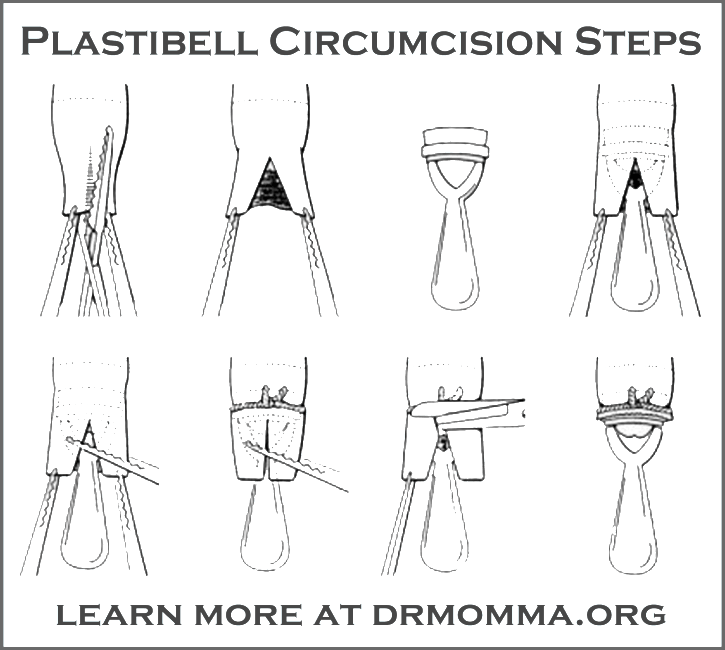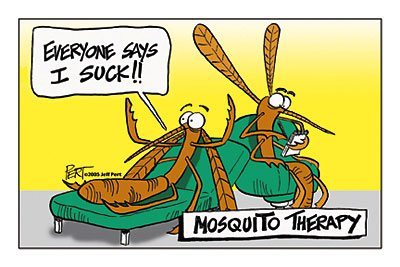Imagine This
You bring a beautiful baby girl into this world. You count her fingers and toes. You can’t believe the wonder of this tiny, perfect human being. She trusts you to keep her warm, nourished, and safe from harm.
You and others hold down your baby or when she has grown and is a little girl. Someone uses a scalpel, a knife, a razor blade, a piece of glass, or some other sharp instrument to cut the skin off of her clitoris and remove all or part of it. Perhaps more is done. Perhaps the inner lips of her labia are removed. Perhaps the opening to the vagina is surgically altered. Perhaps the entire labia is sewn together leaving only a small opening, one that is not large enough to deliver a baby, not large enough to allow intercourse unless it is ruptured and torn.
If you live in the United States or Great Britain, you will probably go to the country from which you or your family originated – Africa, Asia, or the Middle East – to have this procedure performed because it is illegal in the United States and Britain. In Britain, you would face a 14-year prison term. In the United States? Probably 30 years, or more.
You love your daughter. Why would you do this?
You do this for social, cultural, or religious reasons. You do this because you have been raised to believe that female circumcision promotes cleanliness and reduction of libido, aiding in chastity before marriage. Your culture tells you your unaltered child is not marriageable. You do it because it was done to you or the mother of your child. You do this because it was done to all the women in your family. You do this because you believe it is the right thing to do.
The list of complications from female circumcision is long. At one end, we find infections, at the other end, sterilization or death. Altered vaginal openings may result in infant death or maternal death during childbirth. Sexuality is forever altered due to the loss of the clitoris and the damage done to other tissues. The circumcision is performed at various ages and can result in significant emotional trauma. This horrific practice continues primarily due to custom and religion.
Now Imagine This
You bring a beautiful, perfect baby boy into this world. In less than 24 hours, a nurse, doctor, or midwife comes to you with a clipboard and a form, asking you to sign permission to cut off the foreskin of your baby’s penis. Skin that nature provided to protect the glans. Skin that is filled with nerve endings that heighten sexual response. Skin that works with the penis during intercourse for normal sexual function, increasing pleasure for both the male and the female.
Why would you do this?
You do this for social, cultural, or religious reasons.
You do this because you have been told that male circumcision promotes cleanliness or prevents disease. You do this because it was done to you or the father of your child. Or you do this because you fell for the lame argument, “You don’t want him to be teased in the locker room for looking different, do you?”

History of Male Circumcision
Looking back at the history of male circumcision in the United States, we find that male circumcision has been the norm in this country for generations. We, as a culture, have been brainwashed into believing that an intact foreskin results in a lack of cleanliness that leads to disease, including cancer and HIV. But that’s not how this medical malpractice started in the United States. It began with the fear of sexuality – specifically, nocturnal emissions (wet dreams) and masturbation. Circumcision was claimed to cure or prevent both of these “horrific acts.” These claims were followed by more claims and “scientific” papers “proving” ridiculous cures through circumcision. These cures and preventions include:
- Prevents syphilis
- Cures epilepsy
- Prevents epilepsy
- Prevents spinal paralysis
- Cures bedwetting
- Prevents curvature of the spine, paralysis, and clubfoot
- Cures abdominal neuralgia
- Cures eye problems
- Prevents crossed eyes
- Cures blindness, deafness, and dumbness
- Prevents blacks from raping white women
- Cures urinary and rectal incontinence
- Prevents tuberculosis
- Prevents penile cancer
- Promotes chastity
- Prevents prostrate cancer
- Prevents venereal disease and cancer of the tongue
- Prevents cervical cancer in women
- Provides immunity to nearly all physical and mental illnesses
- Cures nervousness
- Prevents bladder cancer and cancer of the rectum
- Prevents urinary tract infections
- Prevents AIDS
- Prevents neonatal group B streptococcal disease
- Prevents HIV infection
The information above was included in an interesting slide show presented by the International Coalition for Genital Integrity. Their slides show the rise and fall of circumcision rates in the U.S. and the U.K. along a timeline in association with the misinformation pushed upon the American people through the medicalization of circumcision. (See link below).
The history of circumcision predates recorded history and is a global phenomenon. It is argued that the practice of circumcision came from cultural diffusion, that it was a practice that started with early man in Africa and was retained after humanity dispersed. The argument for this belief is simply that it was unlikely the practice started spontaneously across the globe in various cultures. However, we should bear in mind that many human behaviors started spontaneously and independently across the globe including agriculture, pottery making, tools, and weaponry.
It is also argued that foreskin (especially if it is tight) is a physiological barrier to early sexuality that aided in delaying reproduction, thereby favoring natural selection. Many cultures ritualized circumcision as a rite of passage from childhood to manhood—preparing the young man for a sexual union.
It was not only a tribal rite in many places across the globe. It was performed in ancient Egypt as shown by mummies and by hieroglyphics, it is also believed it was performed on slaves and conquered warriors as a show of dominance and humiliation.
Circumcision and Religion Today
People of the Jewish faith practice circumcision due to their belief that God commanded it of Abraham and his descendants (and those he bought) as “…a token of a covenant betwixt Me and you. …And the uncircumcised male who is not circumcised in the flesh of his foreskin, that should shall be cut off from his people; he hath broken My covenant.” Genesis 17:714
Cleanliness and hygiene are essential to the Islamic faith. Circumcision is believed to be an important aspect of cleanliness. “Five things are part of the fitrah: shaving the pubic hair, circumcision, trimming the moustache, plucking the armpit hairs, and cutting the nails.” Although they do not believe it to be a covenant between God and mankind, they do believe circumcision is submitting to the will of God. They believe female circumcision to be mutilation; it is strictly forbidden.
The Current Pro-Circumcision Argument
In 1975 and again in 1983 and 2005, the American Academy of Pediatrics stated, “…there is no absolute medical indication for routine circumcision of the newborn.” Today they state the following on their website:
“The American Academy of Pediatrics believes that circumcision has potential medical benefits and advantages, as well as risks. Evaluation of current evidence indicates that the health benefits of newborn male circumcision outweigh the risks and that the procedure’s benefits justify access to this procedure for families who choose it, however, existing scientific evidence is not sufficient to recommend routine circumcision. Therefore, because the procedure is not essential to a child’s current well-being, we recommend that the decision to circumcise is one best made by parents in consultation with their pediatrician, taking into account what is in the best interests of the child, including medical, religious, cultural, and ethnic traditions.”
The arguments for circumcision include:
- Fewer urinary tract infections
- Less risk of penile cancer
- Less risk of transmission of some STDs including HIV
Urinary Tract Infections
Multiple studies have consistently shown fewer urinary tract infections among circumcised infants compared to uncircumcised infants. However, it is important to note that urinary tract infections among all male infants are rare with an annual estimated rate of 0.18% in circumcised male infants verses 0.70% in uncircumcised male infants.
Penile Cancer
According to the American Cancer Society, “Risk factors for developing penis cancer include human papillomavirus (HPV) infection, not being circumcised, being age 60 or older, phimosis, poor hygiene, many sexual partners, and tobacco use.”
Penile cancer is rare. In the U.S. the current projected stats for 2015 are 1,820 new cases will be diagnosed and 310 men will die from penile cancer. It accounts for less than 1% of the cancers afflicting men; however, it accounts for up to 10% of cancers in men in some parts of Asia, Africa, and South America. Penile cancer is more common among Hispanic men than non-Hispanic men.
HPV, the human papilloma virus, is believed to be responsible for about 63% of penile cancers, though the CDC states that cancer registries do not collect data on the presence or absence of HPV in cancer tissue at the time of diagnosis.
HIV and Other STDS
When reading scholarly articles about circumcision and STDs, the logic or lack thereof in some of the reports is astounding. For example, in the report, Male circumcision: assessment of health benefits and risks, it states: “There is substantial evidence that circumcision protects males from HIV infection, penile carcinoma, urinary tract infections, and ulcerative sexually transmitted diseases.”
It also says, “Eight (studies) reported a statistically significant association between presence of the foreskin and HIV infection, one reported a trend towards an association, one reported no association, and one reported an increased risk with circumcision. To our knowledge, the latter report is the only one in the literature in which, after controlling for potential confounding factors, male circumcision has been associated with an increased risk for HIV infection.”
In another study, male circumcision and common sexually transmissible diseases in a developed nation setting, its conclusion is as follows: “From the findings of this study, circumcision of men has no significant effect on the incidence of common STDs in this developed nation setting. However, these findings may not necessarily extend to other setting where hygiene is poorer and the spectrum of common STDs is different.”
Circumcision is Painful
 We do everything in our power to protect infants from fear and pain, and yet we pretend circumcision is not painful. In reality, it is both painful and traumatic.
We do everything in our power to protect infants from fear and pain, and yet we pretend circumcision is not painful. In reality, it is both painful and traumatic.
Most babies scream frantically when their foreskin is cut off. Some defecate. Some lapse into a coma. The reason some babies don’t cry when they are circumcised is that they can’t cry because they are in a state of shock.” –NOCIRC
Risks of Circumcision
It is rare that a circumcision is completely botched, but it does happen. There are cases where the outcome is the loss of the glans, the shaft of skin, or the entire penis. And there have been cases of sexual reassignment due to the loss of a penis. Babies have died. Other risks include infection, excessive bleeding, and complications from anesthesia (if it was used). We do not know but can only guess at the emotional cost an infant suffers from the initial cut and up to 10 days or more of painful healing. We do not know how this trauma affects bonding during this crucial time.
Circumcised males may suffer from scarring, skin bridges, tearing and bleeding at the circumcision scar site, curvature of the penis, or tight, painful erections.
Not only have they lost the foreskin with all of its many nerve endings, most or all of the sensitivity of the glans has been lost as well. Many circumcised males resent the fact that they are not intact and were not given the choice.
Declaration of the First International Symposium on Circumcision
We recognize the inherent right of all human beings to an intact body. Without religious or racial prejudice, we affirm this basic human right.
We recognize that the foreskin, clitoris, and labia are normal, functional parts of the human body.
Parents and/or guardians do not have the right to consent to the surgical removal or modification of their children’s normal genitalia.
Physicians and other healthcare providers have a responsibility to refuse to remove or mutilate normal parts of the body.
The only persons who may consent to medically unnecessary procedures upon themselves are individuals who have reached the age of consent (adulthood), and then only after being fully informed about the risks and benefits of the procedure.
We categorically state that circumcision has unrecognized victims.
In view of the serious physical and psychological consequences that we have witnessed in victims of circumcision, we hereby oppose the performance of a single additional unnecessary foreskin, clitoral, or labial amputation procedure.
We oppose any further studies that involve the performance of the circumcision procedure upon unconsenting minors. We support any further studies that involve identification of the effects of circumcision.
Physicians and other healthcare providers do have a responsibility to teach hygiene and the care of normal parts of the body and to explain their normal anatomical and physiological development and function throughout life.
We place the medical community on notice that it is being held accountable for misconstruing the scientific database available on human circumcision in the world today.
Physicians who practice routine circumcision are violating the first maxim of medical practice, “Primum Non Nocere” (“First, Do No Harm”), and anyone practicing genital mutilation is violating Article V of the United Nations Universal Declaration of Human Rights: “No one shall be subjected to torture or to cruel, inhuman or degrading treatment…” – Adopted by the General Assembly, March 3, 1989 Anaheim, California USA
Conclusion
The truth is simple. There was no flaw that surgery can improve upon in the design of our genitals. The foreskin protects the penis. During infancy, the foreskin is adhered to the glans, protecting it from urine, feces, and friction from diapers. In later years, its protective cover keeps the glans moist and the skin soft while protecting it from trauma and injury, whereas unprotected glans become dry, calloused and desensitized. The two other functions of the foreskin are sensory and sexual. An intact penis is four times more sensitive than a circumcised penis. Genital integrity is the right of every human being. It’s time we put an end to this barbaric practice.
Sources:
- Where We Stand – Healthy Children.org
- Female genital mutilation – NHS Choices
- Jewish Practices & Rituals: Circumcision – Brit Milah – Jewish Virtual Library
- Penile Cancer – American Cancer Society
- HPV-Associated Penile Cancer Rates by Race and Ethnicity – CDC
- Male Circumcision – CDC Fact Sheet
- Personal Hygiene : Cleanliness is Half of Faith – The Religion of Islam
- Male circumcision: assessment of health benefits and risks; Stephen Moses, Robert C Bailey, Allan R Ronald – Departments of Medical Microbiology, Community Health Sciences and Medicine, University
- of Manitoba, Winnipeg, Manitoba, Canada
- Male circumcision and common sexually transmissible diseases in a developed nation setting B Donovan, I Bassett, N J Bodsworth, Genitourin Med 1994;70:317-320


 We do everything in our power to protect infants from fear and pain, and yet we pretend circumcision is not painful. In reality, it is both painful and traumatic.
We do everything in our power to protect infants from fear and pain, and yet we pretend circumcision is not painful. In reality, it is both painful and traumatic.